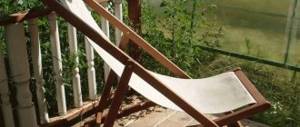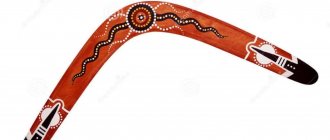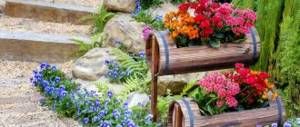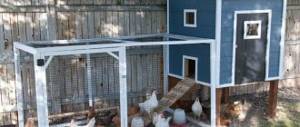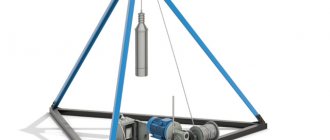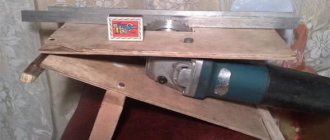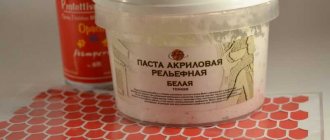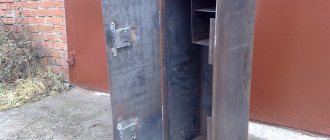General requirements for pheasant enclosures
Pheasants are large wild birds that cannot be free-ranged in unfenced areas (like chickens). Due to their impressive size, they need a larger area: pheasants do not like crowding, so the enclosure must be built in such a way that each bird has enough space to move (and for the chicks, also the ability to fly). In addition, pheasants are quite shy, and this also needs to be taken into account when constructing an enclosure.
Thus, a properly designed pheasant house looks like this:
- location on dry sandy soil, on the sunny side;
- the top must be covered with a net - nylon or made of ropes (timid pheasants often soar sharply perpendicularly upward and can be injured on a metal net);
- the presence of decorative driftwood, stairs, greenery bushes and other elements inside the enclosure;
- the presence of grass in the poultry grazing area - if the grass does not grow on its own, it needs to be sown;
- additional heating systems (poultry houses with warm air supply) - in harsh climatic conditions;
- for Diamond or Golden breeds of pheasants, individual houses must be located inside the poultry house;
- the back wall of the poultry house should be blank - this is necessary for privacy and rest of the bird;
- the presence of a separate place for young animals and adult birds (this will require an additional partition inside the house).
If you plan to keep more than 15 units of this bird, you will need additional fences that will divide the aviary into zones. This is necessary to avoid crowding and crushing of birds, and will also help prevent fights between males.
What should it be?
When we get pheasants, we should not forget that this is a wild bird and it needs to create comfortable conditions. Only if the conditions resemble the natural environment will the bird feel comfortable. The first rule is area. But here it is worth considering the number of birds. If you have a pair or several birds living with you, it is unlikely that you will find it convenient to walk around your property every time in search of eggs.
For normal development in the enclosure, about 1 square meter should be allocated per pheasant. meters of area. It is advisable that there are small bushes or thickets of climbing plants around the perimeter. In nature, these birds lead a hidden lifestyle and build nests in just such places. Another important rule is that pheasants are extremely aggressive, so males can only be kept in pairs with a female.
A regular bird aviary involves a metal or wooden frame, which is surrounded on all sides by mesh. The shape can be either rectangular or some other (see photo). It is also important to cover the top of the fence with mesh or cover it with a roof, since birds fly high. The roof will also protect from rain and bad weather. But in this case, it is best to make a separate house like a booth inside the enclosure.
The fence must be placed in a dry place with sandy soil. If the soil is clayey, then its top layer can be covered with gravel or sand yourself. If you have a lot of birds, you can divide one aviary into several sections. For example, allocate one for young birds, the second for adult birds. Entrances to both zones must be separate.
Primary requirements
- For ease of egg collection, avoid large thickets of grass throughout the enclosure. It is best to plant shrubs and climbing plants on only one side of the sand.
- Shelter is very important not only from bad weather or sunlight, but also to protect females from overexcited males.
- There should be several houses if there are a lot of birds. Make their size approximately 1.5 by 1 meter.
- If the grass in the enclosure does not grow naturally, then millet or sorghum can be sown in a small area. Also very good silage rape and other grains.
- It is better to make the mesh on top of the fence soft, for example, nylon, not steel, so that the birds are not damaged during flight.
- The cell of the main mesh around the perimeter should be no more than 1.5x1.5 cm, so that rodents and other pests do not get into the enclosure.
- In climatic conditions with harsh winters, small insulated poultry houses should be adjacent to the aviary for breeding exotic species of pheasants.
- Chain-link mesh with a cell of 1.5x1.5 cm,
- Wooden boards for houses,
- Nails and staples for mesh,
- Nylon mesh for the top,
- Slate for shelter roof,
- Metal or wooden support poles,
- Varnish or paint.
- First of all, we need to make supports on which we will then attach the mesh. You can make them yourself from wooden beams, metal and even concrete. It all depends on your capabilities and desires. Concrete pillars are considered the most durable. But metal ones also work well.
- We make markings on the ground where the supports will be located around the perimeter. We fix them in the ground. It is important that the posts are in the middle of the perimeter of the enclosure for additional support of the mesh.
- Now we stretch the chain-link and secure it to the posts using special staples.
- If you cover the top of the fence with a nylon mesh, then we attach it using the same principle.
- If you want to make a slate roof, then first cover the perimeter of the enclosure with rafters (for a gable roof) or sheathing for a single-pitch roof.
- The roof is ready, the walls are there, all that remains is to make the door and the booths. For this we need wooden boards and nails. Here you can already show your imagination. The main thing is that the cages are comfortable. See the photo below for how it looks finished.
We suggest you read How to make a passport for a kitten
Possible enclosure options
The standard material for constructing the frame of an enclosure is wood: such material is solid, durable and withstands weather conditions well. Nevertheless, the frame for a pheasant enclosure can be not only wooden, but also metal: this design is lighter, more compact, and easier to disassemble and assemble.
In this case, at least one wall is tightly clogged with wood or sheets of metal, or an additional blind wooden outlet is made (the bird needs such shelter in order to hide). The wooden and metal frame is covered with mesh along the entire perimeter, paying special attention to the roof (as a rule, the ceiling of the enclosure is stretched with a double layer of mesh: the lower one is rope, and the upper one is metal).
For additional protection from precipitation, wooden or metal material is pulled over the mesh, which must be removed in sunny, warm weather.
A modern version of the enclosure is a polycarbonate greenhouse: such an enclosure will have sufficient impact resistance, provide excellent protection from precipitation and will maintain constant dryness inside the greenhouse. Polycarbonate greenhouses are becoming increasingly popular: such a house is very easy to build, and it is also very convenient for pheasants.
How to calculate the required sizes
The size of the enclosure will ultimately depend on two indicators: how many birds will be kept (taking into account the possible appearance of young animals) and what kind of pheasant breed (we have already discussed that some species can only be housed in pairs).
The standard calculation of the required size of the enclosure is as follows:
- one adult bird must have at least 1.5 square meters of space, and for a pair (for example, a male and female king pheasant) - at least 10 meters;
- The height of the house should not be less than 2.5 meters - this will allow the chicks to acquire flight skills in conditions of limited movement.
Thus, to keep 10 pheasants, you will need an enclosure with a total area of at least 15–17 square meters and a height of at least 2.5 meters.
Types and size of enclosure
The size of the structure will depend on 2 main indicators: what kind of bird breed will be bred, as well as how many pheasants will be kept in the house. We offer a standard calculation of the size of an enclosure for pheasants. You will have to create the following structure with your own hands:
- But one adult must have at least 1.5 m² of territory. A pair of birds will require at least 10 m² of space.
- The height of the structure must be at least 2.5 m. Thanks to this, the chicks will be able to acquire flight skills while being in conditions of limited movement.
For example, to keep 10 pheasants, you will need a poultry house with a total area of at least 15 m² and a height of at least 2.5 m.
The design of the aviary should be planned depending on the number of birds and the characteristics of the breed. The most common options are:
- a traditional enclosure with a wooden frame, covered with mesh around the entire perimeter and roof. On one side there should be a blank wall on which houses for resting birds are located;
- polycarbonate greenhouses, in which the front and back walls are covered with a special mesh, are less popular, but they are easier to install and convenient for birds due to constant light and dryness.
Polycarbonate aviary
Some owners use a slate or tile roof. This design allows you to equip hanging houses in which pheasants can hide from bad weather or sleep.
How to build a pheasant enclosure
Construction of a poultry house for pheasants is not a troublesome or costly undertaking: however, the quality and shelf life of the enclosure itself depend on how high-quality materials are selected and whether the sequence of actions during construction is followed correctly.
Necessary materials
To build a standard simple enclosure you will need:
- Galvanized or varnished mesh. This special mesh coating will provide additional protection for the material and prevent rust. The size of the cells should not exceed 1.5 by 5 cm, otherwise tits and sparrows, stealing food from pheasants, weasels, ferrets and other pests will be able to get through the very large holes. In addition, chicks and young pheasants will also be able to get out through large cells, where they can easily become prey for a predator. In order to prevent birds from being injured through a sharp metal net (chain-link), you can use a plastic mesh with small cells.
- Nylon or rope mesh. The ceiling in the enclosure is stretched with such a net: the cells of the rope or nylon net should not exceed 2.5 cm. The average shelf life of such a ceiling will be from 5 to 7 years, after which the roof will have to be replaced.
- Tiles, slates or sheets of metal to cover the roof. For a gable roof, you will additionally need rafters, and for a single-pitch type, sheathing (solid flooring).
- Beams for the frame (wooden or metal). You can also use concrete pillars - such a frame will be very durable, although more expensive. In addition, you will need wooden planks to build houses, separate recreation areas, poles and perches.
- Cement and sand. Necessary for pouring the foundation (sand will be laid on top of the finished foundation as the base soil).
- Nails, staples. Necessary for securing the mesh and frame.
- Varnish, paint, slaked lime.
- Gravel (as an additional layer of soil).
The financial costs for building a small poultry house with a capacity of 5–8 birds will average $40–50. Large solid enclosures are more troublesome to build, so farmers mainly use compact, lightweight and portable poultry houses.
Read also: Pheasants: breeding and keeping at home for beginners
Tools for work
To build an enclosure you may need the following tools:
- hammer;
- pliers;
- screwdriver;
- saw;
- welding machine;
- plane;
- jigsaw;
- brushes (for processing and painting wood).
In addition, you will need special clothing and gloves to protect against contamination and possible injury from the tool.
Step-by-step instruction
When the selection of materials and necessary tools is completed, it is necessary to move on to the next stage - the actual construction of the enclosure. Step-by-step construction instructions look like this:
- Preparing the soil and laying the foundation. The top layer of soil is cleaned and removed, then the cleaned area is sprinkled with slaked lime (layer up to 2 cm). This procedure is necessary to disinfect the future poultry house. Next comes the preparation of the foundation: the necessary markings are made on the ground, and a ditch up to 70 cm deep is dug along the entire perimeter of the future enclosure.
Marking the foundation Then you need to prepare a solution (cement with sand in a ratio of 1:4). The beams are laid in a dug ditch, and the prepared mortar is poured on top (the width of the beam should not be much less than the width of the ditch itself). The drying time of the foundation ranges from 2 to 7 days depending on weather conditions. - Installation of the frame. Frame columns are placed on the prepared foundation and carefully secured in the ground. Such supports must be buried in the ground to a depth of at least 40 cm. It is important that the front support pillars are buried deeper and the rear ones less (for example, 50 and 40 cm, respectively). Support posts are also mounted in the middle of the enclosure - they will protect the mesh from sagging.
Installing the frame Next, the mesh is stretched over the installed frame and fixed with brackets. It is important to bend all the sharp ends of the staples - frightened pheasants can be very seriously injured by them.
Mesh attachment - Lathing. After installing the frame and surrounding it with mesh, you should install the roof of the enclosure. If the roof is assumed to be of a pitched type with a slate covering, then the entire perimeter is covered with sheathing on top. It is done like this: beams are attached on top of the installed supports (along the entire perimeter), then one additional beam is fixed transversely to the middle support, and the second longitudinally. Boards or metal sheets are nailed to these beams (steps of 50–70 cm). Slate is laid on top of such a sheathing, which is fixed with special slate nails.
Installing a polycarbonate roof - Preparing the floor of the poultry house. The floor is covered with clean river sand mixed with gravel, grass is sown, driftwood, perches and ladders are installed. You can build a hut from branches and install rest houses. Additionally, boxes with ash are installed, where the pheasants could bathe and be covered with dust. At this stage it is already possible to build feeders and drinking bowls.
You can put green plants in the enclosure - Processing the enclosure. In order to prevent rotting of the wooden frame, the wood must be additionally processed. An antiseptic based on diesel fuel and bitumen is best suited for this purpose. It is prepared like this: the bitumen is placed in a bucket, heated to a boil, removed from the heat and diesel fuel is poured in in small portions. The amount of diesel fuel is not strictly defined, but it should be such that the cooled bitumen still has a liquid consistency. In this case, a hot antiseptic is used to treat wood (it penetrates better into the structure of the wood - up to 7 cm deep). After treatment, the wood must be allowed to dry for 24–36 hours, and then treated with oil paint (nitro varnishes and nitro paints are prohibited). Before painting, the wooden frame must be primed so that paint drips will not remain on it. The back wall, which should be completely covered with wood, should have small gaps: pheasants are not afraid of drafts (on the contrary, they love fresh air), but if the boards are tightly packed, the paint will begin to rot and fall off.
It is important not to oversaturate the enclosure with various structures: if there are a large number of houses, perches, snags and feeders, pheasants may experience limited movement. There should be at least 1.5 meters of free space for each bird.
How to set up an enclosure for pheasants at home on a budget: video
Aviary care
The main rule of any enclosure (including a pheasant one) is cleanliness above all else. No matter how modern and equipped the aviary is, if there is dirt in it, the birds will begin to feel unwell and there will be a risk of developing various viruses and diseases. The rules for caring for the enclosure are as follows:
- Feeders, drinking bowls, perches, houses - all this must be regularly washed and treated with a disinfectant (for example, slaked lime or sodium hydroxide).
- Sand also needs to be replaced regularly (at least once every 2 months).
- Droppings, particles of feathers and fluff should be removed daily.
- Sometimes small rodents begin to crawl through a sagging or damaged mesh. To protect the enclosure from such uninvited guests, some methods should be used (for example, installing mousetraps).
- To prevent the appearance of parasites in the poultry house, the inside of the boards is covered with a layer of lime - it is safe for birds, but prevents the growth of bacteria.
- General cleaning and disinfection of the entire poultry house should occur every year (in sunny summer weather).
Aviary for industrial breeding of pheasants: video Building an enclosure for pheasants is not a labor-intensive process - even a beginner can cope with this task. If you are breeding pheasants for only one season, you can build a very simple enclosure from a frame and stretched mesh. In all other cases, it is important to stock up on high-quality materials and install a durable enclosure structure: in a well-constructed poultry house, pheasants can be confident in their own safety and feel good.
in winter, when there is no snow and frost, do you give water every day or twice a day, or once every two days?)) We are waiting for photos of your enclosures!
Features of pheasant breeding
Like any other exotic bird, pheasants are very difficult to breed. The first thing you need to start with after purchasing young animals is the formation of pairs. Depending on the breed, they can be polygamous or monogamous, so before building an enclosure you must take this fact into account, otherwise constant fights for the female cannot be avoided. Thus, settlement should be in pairs or at the rate of 1 male for 4 females.
It is necessary to pay attention to the fact that males from different families cannot meet in open areas (pheasant fights sometimes end in the death of one of the birds). Inside the enclosure, you must make a secluded place for females, in which they will lay eggs and hide from aggressive individuals.
Many breeders install blinders on laying hens to prevent egg pecking. Well-developed peripheral vision will allow them to function normally, but they will not be able to harm future offspring.
Birds do not tolerate noise and loud sounds well, so the aviary should be installed away from other animals and sources of noise. They remember well the color of clothing and the behavior of the breeder, so you need to come to the enclosure in the same suit, without unnecessary movements or loud sounds.
- The main condition for a comfortable life for pheasants and the service life of the enclosure is regular maintenance of cleanliness. Perches and feeders should be cleaned when they become dirty, at least once a week. Leftover food and bird feces must be removed regularly, otherwise the pheasants may become infected with parasites;
- Sand should be added as needed, but in such a way as to maintain the level and keep the floor clean;
- If rodents appear in the enclosure, they need to be gotten rid of as soon as possible, since rats and mice will steal food, scare the birds and can infect the entire population with serious diseases;
- Twice a year it is recommended to completely disinfect the entire enclosure to prevent disease and prevent rotting. At this time, you can restore the paint layer and completely change the sand coating inside.
The pheasant is a wild bird, and unlike chickens, which can be released to roam around the yard, pheasants must always be kept in closed enclosures. The aviary allows the birds to move quite freely, but at the same time does not allow them to fly away. In order for pheasants to live comfortably in an enclosure, the following nuances must be taken into account when building it:
- The aviary is located in a dry, sunny place, and preferably on sandy soil. If the soil is clayey, it is covered with a layer of fine gravel or river sand 30-40 cm thick.
- The top of the enclosure is made of mesh. Frightened pheasants tend to fly vertically upward and can be injured on hard surfaces. It is preferable to choose a mesh made of rope or nylon.
- Non-decorative pheasant species prefer stairs, perches, snags or just bushes, and they must be in the enclosure. Houses in enclosures are needed only for diamond or gold pheasants.
For one bird a minimum of 1.5 m is required, and for a pair - 9.5 m of area.
Pheasants are very shy, and in order for the bird to retire and rest, the back wall of the pheasant coop is made blank.
- The main condition for a comfortable life for pheasants and the service life of the enclosure is regular maintenance of cleanliness. Perches and feeders should be cleaned when they become dirty, at least once a week. Leftover food and bird feces must be removed regularly, otherwise the pheasants may become infected with parasites.
- Sand should be added as needed, but in such a way as to maintain the level and keep the floor clean,
- If rodents appear in the enclosure, they need to be gotten rid of as soon as possible, since rats and mice will steal food, scare the birds and can infect the entire population with serious diseases,
- Twice a year it is recommended to completely disinfect the entire enclosure to prevent disease and prevent rotting. At this time, you can restore the paint layer and completely change the sand coating inside.
For an example of creating an enclosure for pheasants, see the video
Nikolay Zhuravlev chief editor
Cleanliness in enclosures is one of the essential conditions for successful pheasant breeding. Perches, feeders and drinkers need regular washing and periodic disinfection. Leftover food, droppings and dirt create excellent conditions for the reproduction of external parasites of birds. Clean sand is the key to the health of pheasants, and it should be changed promptly on the floor of the enclosure and in the baths.
If rodents begin to sneak into the enclosure, measures should be taken immediately to combat them. The inside of the aviary boards are covered with lime to protect the birds from parasites. The outside of the enclosure is painted with varnish or oil paint to protect the boards from rotting. When choosing paint, you need to pay attention that it does not contain lead. This link will tell you about setting up a chicken coop for 10 chickens.
The basic rule of any poultry house is cleanliness. No matter how equipped and modern the pheasant enclosure is, if there is dirt in it, the pets will feel very bad, and there will be a risk of various diseases and viruses. The rules for caring for a poultry house are as follows:
- Water bowls, feeders, houses and perches should be washed regularly and treated with special disinfectants, for example, sodium hydroxide or slaked lime.
- Sand must be replaced at least once every two months.
- Particles of down and feathers, droppings should be removed from the house daily.
- Sometimes small rodents make their way into the enclosure through a damaged or sagging mesh. To protect the poultry house from such enemies, it is best to use mousetraps.
- In order to prevent parasites in the poultry house, the inside of the boards is covered with a lime layer. Lime is absolutely safe for birds, but it can also prevent the growth of bacteria.
- Disinfection and general cleaning of the entire poultry house should be carried out annually in the summer.
We suggest you familiarize yourself with How to make a cage for rabbits with your own hands
In conclusion, it is worth noting that the construction of an enclosure for pheasants is considered a very labor-intensive process. But even a person inexperienced in this matter can cope with the construction of the said poultry house.
Requirements for an aviary
Having decided to keep pheasants on your property, you need to prepare an open space near the house. You should be prepared for the fact that the construction of aviaries will entail significant financial expenses, even if the bird houses are made independently.
Read also: Common guinea fowl: features, appearance, character
When building an enclosure for keeping pheasants, you should take into account the needs of the specific species of these birds. Depending on this, there should be shrubs, grass, etc. inside the cells. This is necessary for decorative species, while ordinary pheasants do not care about the presence of tall vegetation in the cage. This makes the cleaning process easier.
In addition, the place where pheasants are kept depends on the purpose of breeding the latter and the expected number. They should have enough free space. In order for individuals to develop normally, it is necessary to allocate at least a square meter of space to each bird.
What materials are needed
To build a pheasant enclosure with your own hands, you need to stock up on several types of materials. The first thing you need is a mesh from which the fence will be made. The size of the cells should be approximately 5 by 1.5 cm.
The mesh should have a zinc, varnish or other anti-corrosion coating, which will allow it to last longer. If you use a mesh with larger cells, ferrets and other predatory animals will sneak into the enclosure and begin to kill the birds. And the sparrows will steal food. In addition, the chicks will be able to get out of the enclosure through large cells.
You also need to purchase a nylon mesh from which the canopy will be made. The thickness of the mesh threads is 1.5-2 mm, and the mesh size should not exceed 2.7 cm. This mesh will last about five years, after which it will need to be replaced.
Required tools and materials
An enclosure for pheasants can be built from scrap materials (wooden boards, beams). True, the walking area must be covered with a net. If you leave the aviary open, the birds may fly away. Houses for sleeping and nesting are built from any building materials.
See also
Description of hunting pheasants and breed characteristics, breeding and careRead
Tools and materials for building an aviary and poultry house (optional):
- fine mesh metal mesh for the fence and plastic for the top;
- wooden beams or metal profiles for constructing the frame;
- iron pillars for support;
- boards, bricks, blocks for building a house;
- slate, tiles, roofing felt, polycarbonate sheets for building a roof or canopy;
- hammer, saw, screwdriver, pliers, plane;
- cement, sand, plaster, spatulas, graters;
- paints and varnishes for wood, brushes, rollers;
- nails, screws, staples, bolts;
- overalls, respirator, gloves, safety glasses.
Construction stages
As mentioned above, building an enclosure is a resource-intensive process. For example, if you plan to keep a large number of birds, you will need to allocate an area of about 400 square meters for their breeding. The height of the cages should allow the chicks to learn to fly freely.
Keeping pheasants in flocks or placing them in pairs depends on the specific species. If there are king pheasants in the flock, it is better to place them in separate cages due to the fact that males always fiercely guard their territory, and the presence of other males nearby will always end in a fight.
It would be optimal to place chicks and adult birds separately. The enclosure should be positioned so that the cages face east or south to receive the maximum amount of sunlight. You also need to choose a dry land area for construction, which can subsequently be covered with a layer of sand. If the soil contains a lot of clay, you should remove a layer of soil about 30 cm thick and fill it with fine gravel or dry river sand.
The boards need to be covered with a protective layer. A mixture of diesel fuel and bitumen is best suited for this. It is prepared like this: a bucket of bitumen is brought to a boil and topped up with diesel fuel so that it is fluid. Then you need to immediately process the boards. Better protection can be provided by subsequent painting.
A ditch half a meter deep is dug along the perimeter of the intended area. It should ensure free laying of the beams. By mixing cement with sand, a solution is prepared, which should be poured into the beams laid in the ditch. Next, support beams are installed on the foundation. To create a pitched roof, one pair of beams should be lowered lower.
To prevent the roof from sagging, a pair of middle beams are installed. If you are making a gable roof, you need to make rafters and install sheathing on which the tiles or slate will be fixed. A pitched roof is installed in almost the same way: lathing is made and the mesh is stretched and stapled, or the roof is laid. After completing the work, you should check that the nails are not sticking out, as pheasants can get hurt by them.
Calculation of financial costs
To build a pheasant house measuring 3x3x2.5m, with a pitched slate roof and a wooden back wall, you will need:
- beams 50x50 mm 3 m long. You will need 10 pieces for the frame, 8 for pouring the foundation and 6 for the sheathing. Price ≈ 1080 rub.
- boards 10 cm wide, 6 m long, 20 pcs. Price ≈ 1500 rub.
- 8-wave slate 6 pcs. Price ≈ 1440 rub.
- 27 m of galvanized chain-link mesh. Price ≈ 1620 rub.
- cement 2 bags ≈ 480 rub.
- sand 4 bags ≈ 200 rub.
Building a full-fledged farm takes a lot of time and effort, so compact enclosures are most often built
Having calculated the above costs, we find that the approximate cost of a pheasant farm will be about 6320 rubles.
Arrangement inside
The walls of the enclosure need to be covered with mesh. If desired, one wall is made of planks, thanks to which the pheasants can wait out bad weather. You need to pour sand or gravel on the floor.
The presence of greenery inside the enclosure is mandatory. Shrubs should be planted, plants and grains should be sown. Birds will feel more comfortable if you make perches for those who nest in trees, as well as houses and huts. So that the pheasants can swim, a box with ash or sand is placed. Each cage should have a feeder and water bowl.
Arrangement of the enclosure
In the walking area there should be feeders and drinking bowls (preferably bunker type). Birds love to relax on the sand and take sand and ash baths. The enclosure should have perches or wooden driftwood for the pheasants to fly onto. You can plant low bushes and trees in the walking area. It is advisable to sow the land with grass or cereal crops.
How to build enclosures for keeping pheasants?
Most often, pheasant breeding is carried out by experienced breeders who have been keeping poultry or livestock for many years. Pheasants are very beautiful and colorful birds. The plumage of males is always distinguished by bright colors (red, green, gold, purple shades) and long tails. Females look gray compared to males. With a clearly sedentary lifestyle, pheasants can suddenly fly into the sky when frightened, so in households their wings are either clipped or kept in closed enclosures.
To prevent the pheasant from flying away, it must be kept in an enclosure
For experienced farmers, mastering a new direction of earning money will not be a problem. The main thing is to take into account some nuances before you decide to breed pheasants at home. On a personal plot, special pheasant enclosures are used to keep birds.
DIY aviaries and cages for pheasants
Pheasant is a bird of the pheasant family, caring for which does not present any special problems. If you decide to engage in game breeding, then you should pay attention to pheasant breeding - this is a very promising area. Care and maintenance are almost no different from caring for ordinary chickens. There is even an additional plus - they hunt pheasants. Therefore, many breeders raise pheasants in order to supply them to hunting farms in the future.
At the beginning of the 16th century, the first attempts at artificial breeding of pheasants were made in Europe. And in England it was bred not only for hunting, but also in parks - as an additional element for decorative purposes, to please the eyes of vacationers.
The most convenient way to keep pheasants, both for them and for the breeder, is an aviary.
Requirements for an aviary
Keeping pheasants at home requires an open piece of land near the house. Even if you decide to build poultry houses with your own hands, this process will require significant financial expenditure.
When constructing an enclosure, the needs of a particular breed of pheasant should be taken into account. Based on their characteristics, some need grass, others need shrubs for comfortable living conditions. If for ordinary pheasants bushes and tall grass are not necessary, which makes it easier for the breeder to clean the cage, then ornamental birds cannot do without greenery in their habitat. In royal pheasants, greenery stimulates the reproduction process and helps females hide from annoying males.
Read also: Blue eared pheasant
The type of enclosure also depends on the purpose of keeping pheasants and their numbers. Poultry housing should not be crowded. For their normal growth and development, you need to plan a cage of such a size that each individual has at least a “square” of the total area. In addition, the normal development of pheasant chicks requires the presence of space for the possibility of flight.
The area of the enclosure is calculated using the formula 1 square. m for one pheasant
An aviary for birds when kept at home must be closed not only from the sides, but also from the top, so that the birds cannot fly outside of it. Since female pheasants can lay eggs anywhere, you need to make a convenient entrance in the enclosure for the breeder, since he will have to walk around often, looking for forgotten eggs.
You can easily build an aviary correctly with your own hands, using wood or metal to create a frame.
It is covered with a metal mesh, but it is better not to use chain-link for this purpose, since its weaving can lead to injury to the bird. A pheasant enclosure must have a roof. In addition to its protective functions against adverse weather conditions, it will prevent birds from escaping from the cage.
Galvanized mesh for fencing
Mesh with a cell size of 1.5x.5 cm, or mesh with varnish coating. The mesh with such protection is more durable and resistant to corrosion and negative external factors. It is not recommended to take nets with larger cells, otherwise predators: weasels or ferrets will get into the cage and destroy the birds or their brood. And sparrows and tits can steal food from pheasants.
We invite you to familiarize yourself with the Miniature Pinscher (Miniature Pinscher) - photo, description of the breed, character, reviews
In addition, the pheasants themselves can get out through the wide cells. More often, for pheasant keepers, in order to save money, they take a chain-link mesh, but experienced breeders recommend using a welded branch with cells of 2.5x5 cm, because the chain-link can injure pheasants. An alternative to the first two options is a plastic mesh with 2.5x3 cm cells.
We recommend reading about how to build a dog enclosure on your own plot.
Find out about the construction of a utility block at your dacha here.
How to build a woodshed with your own hands? The answer is here.
Construction of an aviary
Let us note the fact that keeping this bird is not as costly and complex a process as building an enclosure for pheasants. If you want to keep six hundred individuals, you will need to fence a plot of land of 4 acres. When determining the height of the cage, do not forget that it should provide an opportunity to develop flight skills in the chicks and not constrain them.
Depending on the breed of bird, they should be kept in pairs or flocks. It is advisable to keep royal pheasants in pairs, since the male very zealously defends his territory, and in a flock next to other males he will provoke fights.
Drawing of a large pheasant enclosure
It is better to keep pheasant chicks separately from adults. The cage for raising pheasants at home is placed so that it faces south or east. This is done in order to ensure the maximum possible duration of sunlight.
Another important point is the location of the enclosure on a dry plot of land, which can be covered with sand.
If the soil is clayey, before installing the cage, it is worth removing at least 30 cm of the top layer and filling this place with dry river sand or fine gravel.
Construction Materials
In order not to make a mistake with the choice of building materials, their size and quantity, it is advisable to draw up a drawing of the proposed enclosure. Reflect it as close as possible to the planned construction. With the help of a diagram it is easier to see and take into account all the nuances. In addition, it is very convenient to immediately sign the list of necessary goods and tools.
The standard set of building materials for the construction of an enclosure for pheasants includes:
- wooden beams for the construction of the main frame and roof;
- a board for sewing up the back wall of the enclosure;
- cement and sand, or screenings to form the foundation;
- mesh for fencing;
- roofing materials when planning a roof;
- fastening materials;
- paint and varnish coating and antiseptic compounds;
- river sand or fine gravel for laying the floor.
Construction of a house inside an enclosure will require an additional list of materials.
The final stage of construction of the enclosure
After installing the selected frame, we cover it with mesh, preferably galvanized, the service life of which is longer at home compared to ordinary steel mesh. The size of the cells should not exceed 1.5 cm in diameter to prevent the entry of mice and other small predators that can eat feed intended for poultry and become carriers of infectious diseases.
You need to stretch a nylon mesh over the top of the aviary; metal mesh can injure the bird
When installing the enclosure with your own hands, make sure that after finishing the work there are no sharp objects left inside the room that could cause injury (nails, pieces of wire, wood chips, etc.). At the entrance, it is advisable to arrange another room, such as a vestibule, to prevent them from escaping when the door is opened. It is better to make the roof of the aviary not from steel mesh, but from nylon, so that frightened birds do not get injured during a sharp takeoff.
Keeping decorative species of pheasants requires the presence of another already insulated room near the enclosure, so that in case of severe frosts in winter, the birds can warm up. In addition, this room should receive daylight and air, and artificial light is suitable for lighting in the evening. A prerequisite for raising chicks in winter is to equip the barn with heating devices.
